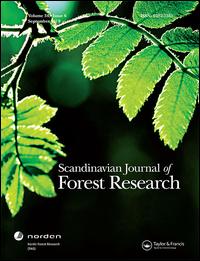Ver ítem
- xmlui.general.dspace_homeCentros Regionales y EEAsCentro Regional Patagonia NorteEEA BarilocheArtículos científicosxmlui.ArtifactBrowser.ItemViewer.trail
- Inicio
- Centros Regionales y EEAs
- Centro Regional Patagonia Norte
- EEA Bariloche
- Artículos científicos
- Ver ítem
Evidence of genetic determination in the growth habit of Nothofagus pumilio (Poepp. & Endl.) Krasser at the extremes of an elevation gradient
Resumen
In temperate mountainous regions, altitudinal clines in tree size and growth habit develop from a gradual adjustment of multiple traits to tolerate harshening conditions with altitude. We perform a common garden trial with seedlings from two stands of Nothofagus pumilio: low altitude, tall forest (1200 m a.s.l) vs. high altitude, shrubby forest (1560 m a.s.l), to determine whether the contrasting
growth habits observed in the forest have a genetic basis,
[ver mas...]
In temperate mountainous regions, altitudinal clines in tree size and growth habit develop from a gradual adjustment of multiple traits to tolerate harshening conditions with altitude. We perform a common garden trial with seedlings from two stands of Nothofagus pumilio: low altitude, tall forest (1200 m a.s.l) vs. high altitude, shrubby forest (1560 m a.s.l), to determine whether the contrasting
growth habits observed in the forest have a genetic basis, which expresses in the juvenile tree life stage. Growth habit syndrome was assessed including size, phenology, growth rhythm and architecture traits. Shrubby archetypes, i.e. small densely-branched plants with codominant axes, were more frequent between plants from higher altitude. Instead, large single-stemmed, slender morphotypes prevailed between plants from the lower stand. These contrasting frequencies between both extremes of the elevation gradient could be explained by differences in cumulative effects in multiple underlying traits, giving clues that there could be genetic determination in the growth habit of N. pumilio. Based on our findings, we recommend that the sampling strategy of future study systems of N. pumilio genetic variation, should encompass multiple elevation gradients along its distribution. Meanwhile, altitudinal zoning seems a precautionary advice for ongoing restoration plans.
[Cerrar]

Fuente
Scandinavian Journal of Forest Research (Julio 2020)
Fecha
2020
Editorial
Taylor & Francis
ISSN
0282-7581
Documentos Relacionados
Formato
pdf
Tipo de documento
artículo
Proyectos
(ver más)
INTA/PNFOR-1104063/AR./Mejoramiento genético de especies forestales nativas de alto valor.
Palabras Claves
Derechos de acceso
Restringido
 Excepto donde se diga explicitamente, este item se publica bajo la siguiente descripción: Creative Commons Attribution-NonCommercial-ShareAlike 2.5 Unported (CC BY-NC-SA 2.5)
Excepto donde se diga explicitamente, este item se publica bajo la siguiente descripción: Creative Commons Attribution-NonCommercial-ShareAlike 2.5 Unported (CC BY-NC-SA 2.5)

